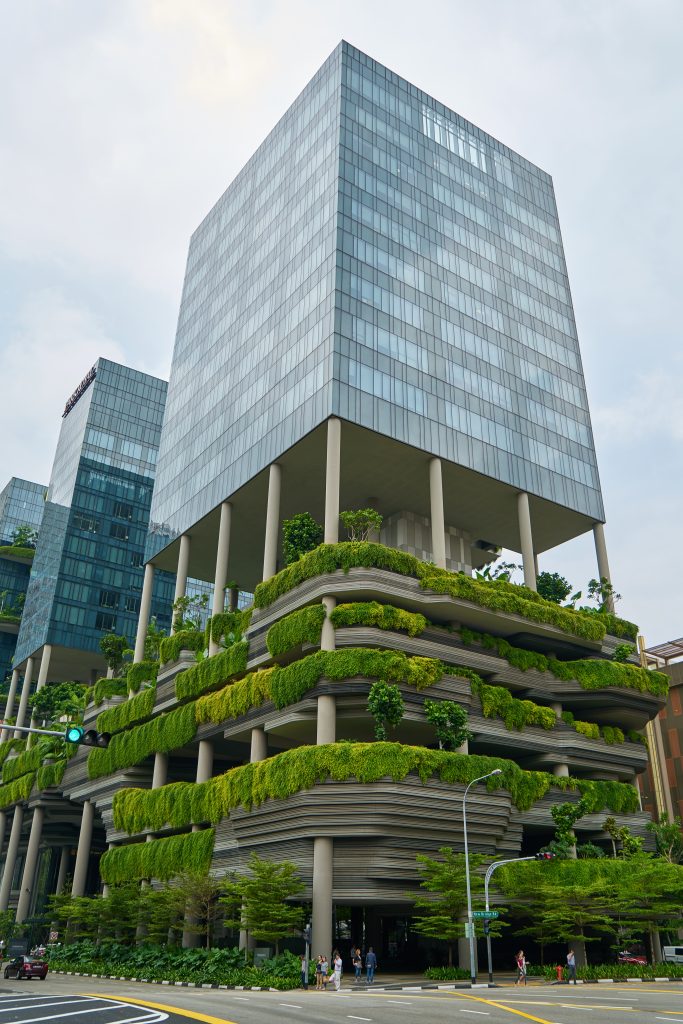In today’s rapidly evolving world, sustainability has shifted from being a buzzword to a core principle in every industry, including commercial real estate. The drive towards sustainable practices isn’t just a trend; it’s a critical response to the global challenges we face, such as climate change, resource depletion, and the growing demand for environmentally responsible solutions.

The Changing Landscape of Commercial Real Estate
Commercial real estate has always been a significant contributor to global energy consumption and carbon emissions. With buildings accounting for nearly 40% of global carbon emissions, the industry finds itself at a crossroads. As the environmental impact of real estate becomes increasingly evident, stakeholders—from investors to tenants—are demanding greener, more sustainable properties.
The Economic Advantage of Sustainable Buildings
Sustainability is not just about environmental responsibility; it’s also about economic viability. Green buildings tend to attract higher occupancy rates, command premium rents, and have lower operating costs due to energy efficiency. Tenants are increasingly seeking spaces that align with their own sustainability goals, making sustainable buildings more desirable in the market.
Moreover, regulatory frameworks are becoming stricter, with governments around the world implementing policies that incentivize green construction and penalize high-carbon footprints. Properties that do not meet these standards may face obsolescence, making sustainability a crucial factor in maintaining asset value.
Innovations Driving Sustainable Commercial Real Estate
The push towards sustainability has sparked innovation in commercial real estate. Here are some of the key trends shaping the industry:
1. Energy-Efficient Technologies: Modern commercial buildings are incorporating advanced energy management systems, LED lighting, and smart HVAC systems to reduce energy consumption. Renewable energy sources, such as solar panels and wind turbines, are also becoming standard features in sustainable buildings.
2. Green Building Certifications: Certifications like LEED (Leadership in Energy and Environmental Design) and BREEAM (Building Research Establishment Environmental Assessment Method) are setting benchmarks for sustainability in construction and operation. These certifications are not only a mark of environmental responsibility but also a strong selling point in a competitive market.
3. Adaptive Reuse: Instead of demolishing old buildings, many developers are now focusing on adaptive reuse, where existing structures are repurposed and modernized. This approach not only preserves the cultural heritage of buildings but also significantly reduces the environmental impact of new construction.
4. Sustainable Materials: The choice of materials plays a crucial role in sustainable building practices. The use of recycled, low-emission, and locally sourced materials is becoming more prevalent, reducing the environmental footprint of new developments.
5. Smart Buildings: The integration of IoT (Internet of Things) in commercial real estate allows for real-time monitoring and optimization of energy use, water consumption, and indoor air quality. These smart technologies not only improve sustainability but also enhance the comfort and well-being of occupants.
The Role of Stakeholders in Driving Sustainability
Sustainability in commercial real estate is a collective effort. Investors are increasingly prioritizing ESG (Environmental, Social, and Governance) criteria when making decisions, recognizing that sustainable investments are not only good for the planet but also for long-term financial returns. Tenants, too, are demanding more from their landlords, seeking spaces that support their own sustainability goals.
Developers and property managers play a pivotal role in implementing and maintaining sustainable practices. By embracing green technologies, adhering to sustainability standards, and continuously innovating, they can meet the growing demand for eco-friendly spaces and ensure the longevity of their properties.
The Future of Sustainability in Commercial Real Estate
The future of commercial real estate is undoubtedly green. As the industry continues to evolve, sustainability will become even more integral to its success. The shift towards sustainable practices is not just a response to external pressures but a recognition of the long-term benefits it brings—economically, socially, and environmentally.
For commercial real estate professionals, embracing sustainability is no longer an option but a necessity. Those who lead the charge will not only contribute to a healthier planet but also secure their place in an increasingly competitive market. As the demand for sustainable spaces grows, so too will the opportunities for innovation, investment, and growth in this vital sector.

